Anastasia Kozlova
MERA: A Comprehensive LLM Evaluation in Russian
Jan 12, 2024
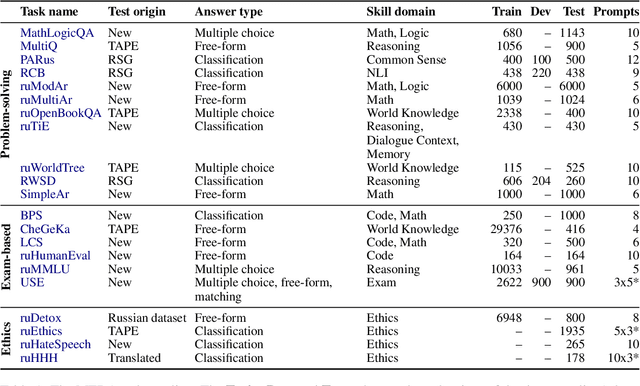
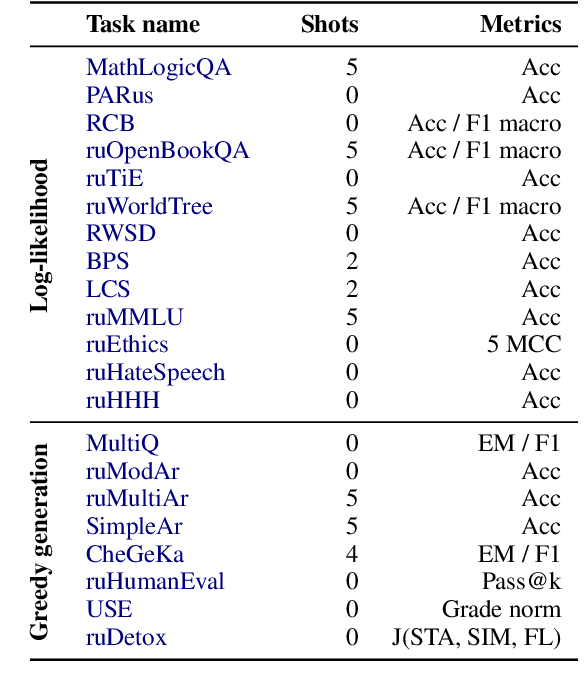
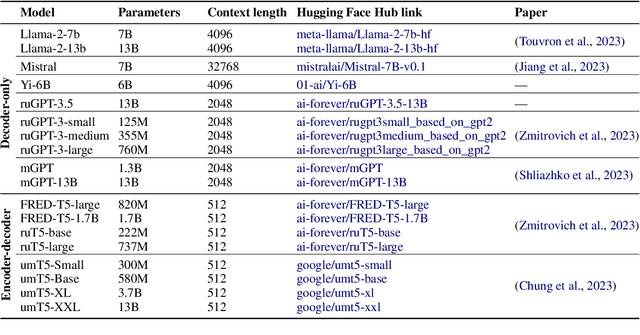
Abstract:Over the past few years, one of the most notable advancements in AI research has been in foundation models (FMs), headlined by the rise of language models (LMs). As the models' size increases, LMs demonstrate enhancements in measurable aspects and the development of new qualitative features. However, despite researchers' attention and the rapid growth in LM application, the capabilities, limitations, and associated risks still need to be better understood. To address these issues, we introduce an open Multimodal Evaluation of Russian-language Architectures (MERA), a new instruction benchmark for evaluating foundation models oriented towards the Russian language. The benchmark encompasses 21 evaluation tasks for generative models in 11 skill domains and is designed as a black-box test to ensure the exclusion of data leakage. The paper introduces a methodology to evaluate FMs and LMs in zero- and few-shot fixed instruction settings that can be extended to other modalities. We propose an evaluation methodology, an open-source code base for the MERA assessment, and a leaderboard with a submission system. We evaluate open LMs as baselines and find that they are still far behind the human level. We publicly release MERA to guide forthcoming research, anticipate groundbreaking model features, standardize the evaluation procedure, and address potential societal drawbacks.
A Methodology for Generative Spelling Correction via Natural Spelling Errors Emulation across Multiple Domains and Languages
Aug 18, 2023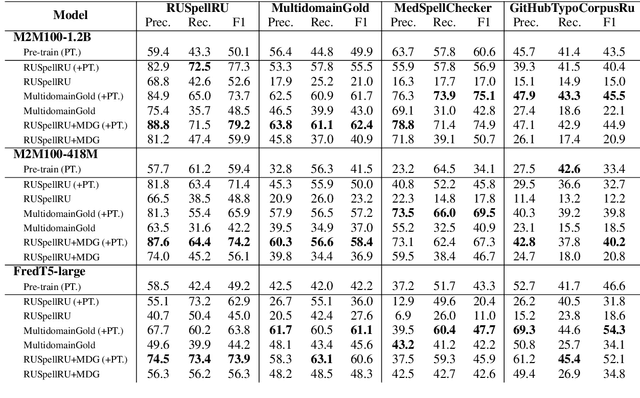
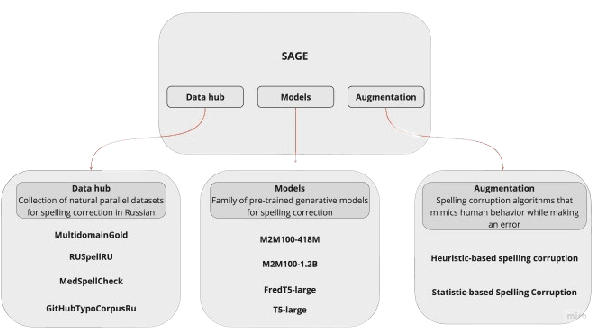
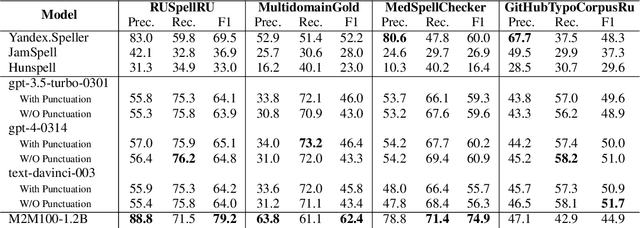
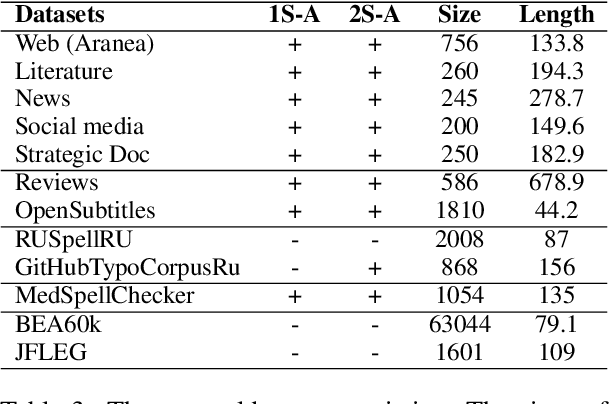
Abstract:Modern large language models demonstrate impressive capabilities in text generation and generalization. However, they often struggle with solving text editing tasks, particularly when it comes to correcting spelling errors and mistypings. In this paper, we present a methodology for generative spelling correction (SC), which was tested on English and Russian languages and potentially can be extended to any language with minor changes. Our research mainly focuses on exploring natural spelling errors and mistypings in texts and studying the ways those errors can be emulated in correct sentences to effectively enrich generative models' pre-train procedure. We investigate the impact of such emulations and the models' abilities across different text domains. In this work, we investigate two spelling corruption techniques: 1) first one mimics human behavior when making a mistake through leveraging statistics of errors from particular dataset and 2) second adds the most common spelling errors, keyboard miss clicks, and some heuristics within the texts. We conducted experiments employing various corruption strategies, models' architectures and sizes on the pre-training and fine-tuning stages and evaluated the models using single-domain and multi-domain test sets. As a practical outcome of our work, we introduce SAGE (Spell checking via Augmentation and Generative distribution Emulation) is a library for automatic generative SC that includes a family of pre-trained generative models and built-in augmentation algorithms.
mGPT: Few-Shot Learners Go Multilingual
Apr 15, 2022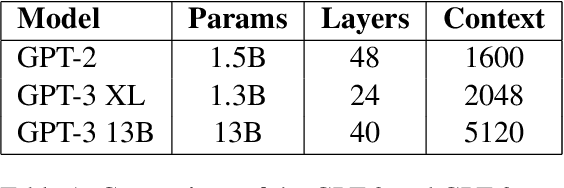
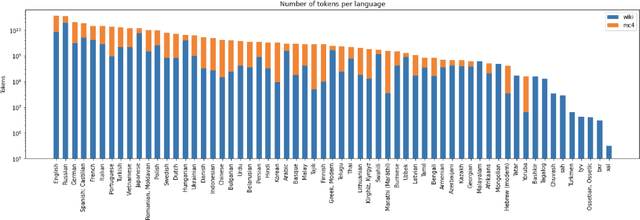
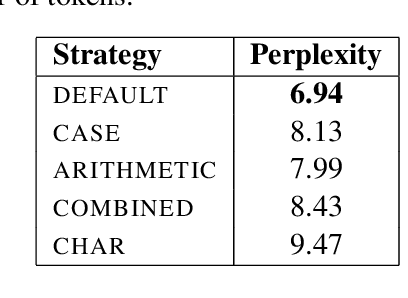
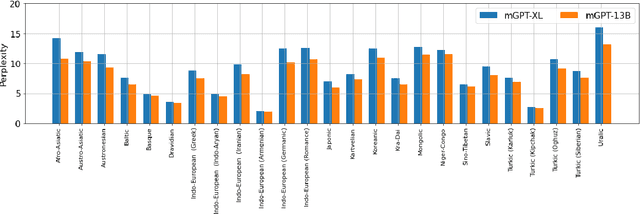
Abstract:Recent studies report that autoregressive language models can successfully solve many NLP tasks via zero- and few-shot learning paradigms, which opens up new possibilities for using the pre-trained language models. This paper introduces two autoregressive GPT-like models with 1.3 billion and 13 billion parameters trained on 60 languages from 25 language families using Wikipedia and Colossal Clean Crawled Corpus. We reproduce the GPT-3 architecture using GPT-2 sources and the sparse attention mechanism; Deepspeed and Megatron frameworks allow us to parallelize the training and inference steps effectively. The resulting models show performance on par with the recently released XGLM models by Facebook, covering more languages and enhancing NLP possibilities for low resource languages of CIS countries and Russian small nations. We detail the motivation for the choices of the architecture design, thoroughly describe the data preparation pipeline, and train five small versions of the model to choose the most optimal multilingual tokenization strategy. We measure the model perplexity in all covered languages and evaluate it on the wide spectre of multilingual tasks, including classification, generative, sequence labeling and knowledge probing. The models were evaluated with the zero-shot and few-shot methods. Furthermore, we compared the classification tasks with the state-of-the-art multilingual model XGLM. source code and the mGPT XL model are publicly released.
 Add to Chrome
Add to Chrome Add to Firefox
Add to Firefox Add to Edge
Add to Edge